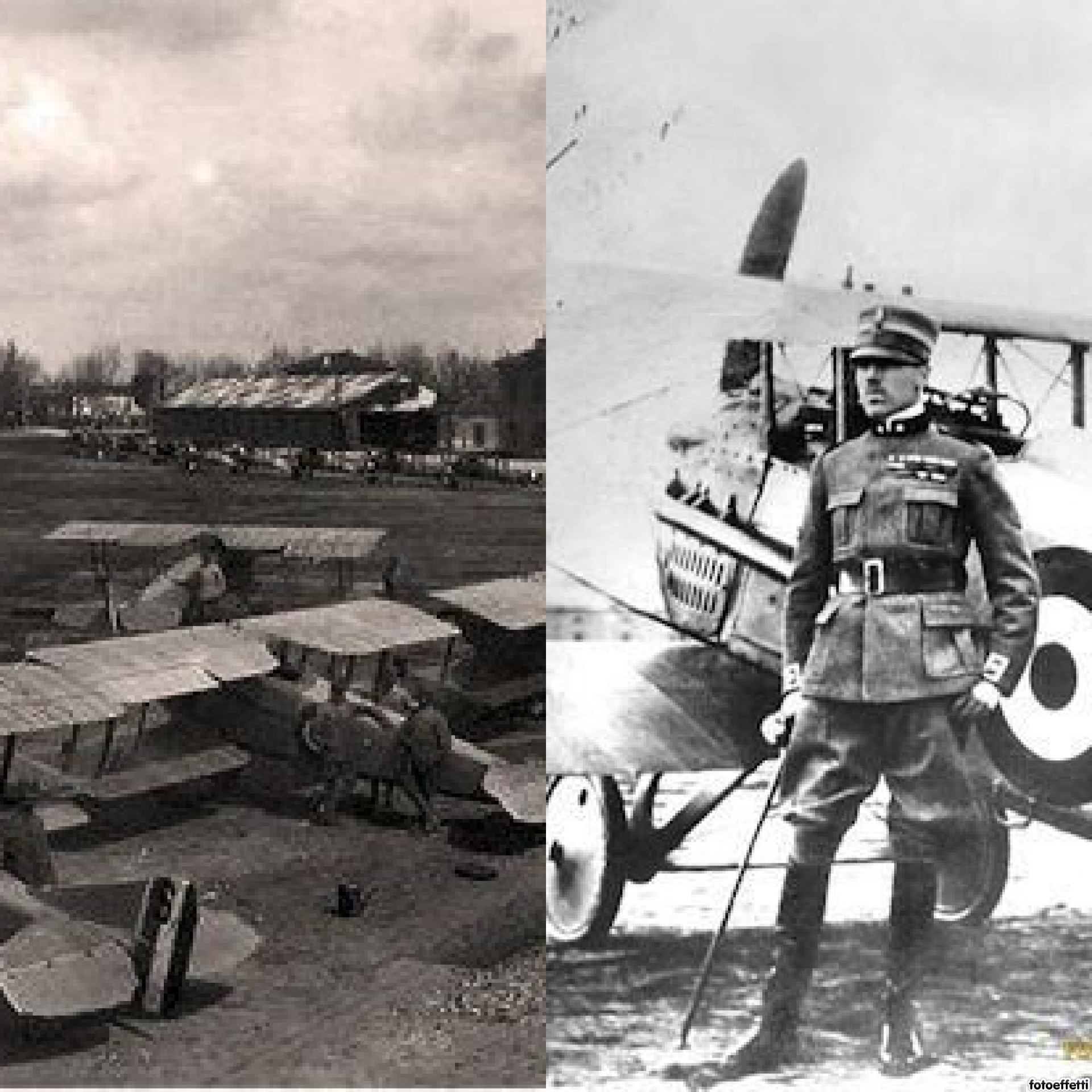L'ultimo volo di Francesco Baracca
 Altro
Altro
Descrizione
Francesco Baracca (Lugo, 9 maggio 1888 – Nervesa della Battaglia, 19 giugno 1918) è stato il principale asso dell'aviazione italiana durante la prima guerra mondiale. Insignito della medaglia d'oro al valor militare si distinse per l'eccezionale abilità nelle tecniche acrobatiche.
Fu inviato a Parigi dove si addestrò sul caccia Nieuport 10 e rientrato in Italia nel luglio del 1915 fu assegnato all'8ª Squadriglia da ricognizione e combattimento su Nieuport-Macchi N.10. Oltre ad effettuare molti dei voli di pattugliamento con la 2ª Squadriglia da ricognizione e combattimento, entrò ripetutamente in azione con il Nieuport 11 "Bébé”, attribuendosi il merito di aver ottenuto trentaquattro abbattimenti di aerei nemici.
Si ritiene che l’ultimo volo dell’illustre personaggio sia stato effettuato proprio sopra Quinto di Treviso, nel giugno 1918, partendo dall’aeroporto di San Bernardino. Questo campo di volo, operativo dall’11 marzo 1918 e realizzato su un'area quasi rettangolare di seicento metri per cinquecento oltre alle dipendenze esterne, ospito’ fin da subito la 91a Squadriglia caccia.
Erano presenti nove hangar a tenda mimetizzata di cui due, più piccoli, potevano ricoverare un solo aereo. Tutto intorno erano dislocati baraccamenti in legno. Alcune delle case esistenti furono impiegate per ospitare i servizi del campo. Nella parte sud, in corrispondenza dell'attuale via Trevisana, erano sistemati i reparti tecnici.
E proprio da qui, il 19 giugno si alzò in volo, per l'ultima volta, il Maggiore Francesco Baracca per l'ennesima missione sul Montello dove cadde nel tardo pomeriggio dello stesso giorno.
Sulla sua morte sono state avanzate diverse ipotesi secondo cui Baracca, piuttosto che bruciare con il velivolo o essere fatto prigioniero, avrebbe preferito suicidarsi. A causa della mancata autopsia, resta il dubbio che le ferite al petto possano invece essere state inferte dai soldati nemici, tesi quest’ultima supportata da elementi concreti, quali il rapporto della missione, le testimonianze degli osservatori a terra e una foto del luogo dello schianto.
La vampata che si sprigionò dal velivolo di Baracca, decollato da soli 15 minuti col pieno di carburante, fu talmente vivida e intensa da essere avvistata dai suoi compagni nell'aerodromo di Quinto di Treviso, distante svariati chilometri.
Il funerale privato si tenne nella chiesa parrocchiale di San Giorgio il 26 giugno 1918, alla presenza di autorità civili e militari e l'elogio funebre fu pronunciato da Gabriele D'Annunzio, ammiratore del pilota di Lugo. La bara fu trasferita nella dimora abituale di Baracca, all’epoca Villa Borghesan. Una seconda cerimonia funebre, pubblica, si tenne nel cimitero di Quinto, vicino al sito su cui sorgeva l'aeroporto e dove ora si erge una stele composta da un'ala e da una targa in sua memoria.
La salma di Baracca verrà poi inumata in una cappella sepolcrale nel cimitero di Lugo.
Francesco Baracca (Lugo, 9 May 1888 – Nervesa della Battaglia, 19 June 1918) was Italy’s top fighter pilot during the First World War. Awarded the Gold Medal of Military Valour, he distinguished himself for his exceptional aerial acrobatics.
He was sent to Paris where he was taught to fly the Nieuport 10 fighter and, upon his return to Italy in July 1915, he was assigned to the 8th Squadron for reconnaissance and fighting missions, flying the Nieuport-Macchi 10. As well as going on many patrol missions with the 2nd reconnaissance and fighting Squadron, he repeatedly went into action in his Nieuport 11 "Bébé”, setting a record by shooting down thirty-four enemy planes.
It is thought that the final flight of this famous pilot was actually above Quinto di Treviso in June 1918. He took off from San Bernardino. This airfield, opened on 11 March 1918 and covering an almost rectangular area six hundred metres by five hundred, as well as housing external staff, soon became home to the 91st Squadron fighter pilots.
It had nine camouflaged hangars, two of which were smaller and only had room for one plane. All around were wooden huts. Some of the existing houses were used for the camp’s services. The technical departments were located at the southern end, where via Trevisana lies today.
It was from here, on 19 June, that Major Francesco Baracca took off for the last time on his umpteenth mission over the Montello hills, where he crashed late in the afternoon.
There was some speculation as to the manner of his death, with some saying that Baracca had decided to take his own life rather than burn with his plane or be taken prisoner. Since no post-mortem was performed, the doubt remains that the wounds to his chest could have been inflicted by enemy soldiers, a theory that was supported by evidence like the mission report, eyewitness accounts on the ground and a photograph of the crash site.
The ball of fire that enveloped Baracca’s plane, which had taken off only 15 minutes earlier with a full tank of fuel, was so bright and intense that it could be seen by his comrades at the Quinto di Treviso airfield several miles away.
A private funeral was held in the parish church of Saint George on 26 June 1918, with civilian and military dignitaries in attendance and his eulogy was delivered by Gabriele D'Annunzio, a great admirer of the pilot from Lugo. The coffin was taken to Baracca’s home which, at the time, was Villa Borghesan. A second public funeral was then held in Quinto cemetery, close to the site of the airport where a memorial consisting of a wing and a plaque now stands.
Baracca’s body was then buried in a tomb in Lugo cemetery.

